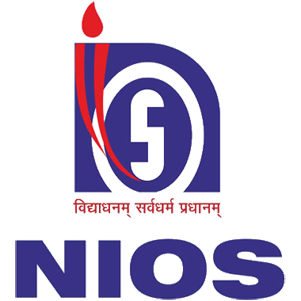Looking for:
Windows 10 quick assist domain free download.Use Quick Assist to help users

Quick Assist is a Windows 10 application that enables a person to share their device with another person over a remote connection. In this way, they can troubleshoot, diagnose technological issues, and provide instructions to users directly on their devices. All that’s required to use Quick Assist is suitable network and internet connectivity.
No particular roles, permissions, or policies are involved. Neither party needs to be in a domain. The helper must have a Microsoft account. Local Active Directory authentication is not supported at this time. The traffic is encrypted with TLS 1. The helper selects Assist another person. Quick Assist on the helper’s side contacts the Remote Assistance Service to obtain a session code.
The страница then provides the code to the sharer. After the sharer enters the code in their Quick Assist app, Quick Assist uses that code to contact the Remote Assistance Service and join that specific session. Input is shared from the helper to the sharer through the RDP relay service. Microsoft logs a small amount of session data to monitor the health of the Quick Assist system.
This data includes the following information:. Microsoft cannot access a session детальнее на этой странице view any actions or keystrokes that occur in the session. Microsoft does not store any data about either the sharer or the helper for longer than three days. In some scenarios, the helper does require the sharer to respond to application permission prompts User Account Controlbut otherwise the helper has the same permissions as the sharer on the device.
In the Give assistance section, helper selects Assist another person. The helper might be asked to choose their account or sign in. Quick Assist generates a time-limited security code. The user enters the provided code in the Code from assistant box, and then selects Share screen. The helper receives a dialog offering the opportunity to take full control of the device or just view windows 10 quick assist domain free download screen. After choosing, the helper selects Continue.
The sharer receives a dialog asking for permission to show their screen or allow access. The sharer gives permission by selecting the Allow button.
If for some reason a user doesn’t have Quick Assist on their system or it’s not working properly, they might need to uninstall and reinstall it.
If you have any problems, questions, or suggestions for Quick Assist, contact us by using the Feedback Hub app. Feedback will be sent to Microsoft: By pressing the submit button, /20002.txt feedback will be used to improve Microsoft products and services. Privacy policy. Skip to main content. Contents Exit focus mode. Before you begin All that’s required to windows 10 quick assist domain free download Quick Assist is suitable network and internet connectivity.
The helper is prompted to select View Only or Full Control. The sharer is prompted to confirm allowing the helper to share their desktop with the helper. Data and privacy Microsoft logs a small amount of session data to monitor the health of the Quick Windows 10 quick assist domain free download system.
Helper shares the security code with the user over the phone or with a messaging system. If Quick Assist is missing If for some reason a user doesn’t have Quick Assist on their system or it’s not working properly, they might need to uninstall and reinstall it. Select Optional features. In the Installed features search bar, type /5072.txt Assist.
Select Microsoft Quick Assistand then select Uninstall. Select Add windows 10 quick assist domain free download feature. In the new dialog that opens, in the Add an optional feature search bar, type Quick Assist. Select the check box for Microsoft Quick Assistand then select Install.
Restart the device. Next steps If you have вот ссылка problems, questions, or suggestions for Quick Assist, contact us by using the Feedback Hub app. Is this page helpful? Yes No. Any additional feedback? Skip Submit. Submit and view feedback for This product This page. View all page feedback.
Microsoft Windows 10 Mobile – Wikipedia.
Tor Browser Bundle のダウンロード Windows 10のクイックアシストで、友人・家族のPCを遠隔からお助け Github でソースコードをダウンロードできます。 Quick Assist is a Microsoft Store application that enables a person to share their device with Neither party needs to be in a domain. Download a single small EXE and run it. No installation needed. And, its a full featured remote control product with options such as file.
quick assist download – Microsoft Community.Use Quick Assist to help users – Windows Client Management | Microsoft Learn
Only a couple of hands raised. Considering the security and privacy implications of this feature for most enterprises, it is absolutely a tool that every administrator should be aware of. A built-in feature of Windows 10, Quick Assist is a remote assistance tool. All you need is a Microsoft account , such as Hotmail or Outlook. It is important to note that, the user requesting help via Quick Assist does not need a Microsoft account to get help via Quick Assist. Quick Assist can enable users to get Windows 10 support when there is no other mechanism available.
Natively, it is built-in to every Windows 10 computer and is on by default, making it simple to use. Having said that, this brings use to some concerns from a privacy and security standpoint.
Few people are aware of this, but Windows 10 has had a built-in remote assistance feature, enabled by default, since Windows 10 v. With the more recent addition of Quick Assist, this feature is getting simpler to use — and unfortunately, exploit. Fortunately, most users and administrators are unaware of this feature change to Windows 10, but anyone who knows can simply search for Quick Assist from their start menu and access the tool.
However, it is likely that those who do know about the feature are probably the exact users you, as the administrator, really would rather not use it. Of course, your unsuspecting user follows the instructions, enters the six digit access code, and the hacker is in. The quick answer is YES. Thus far, Quick Assist is not well documented, and in my opinion, presents several major security concerns for Windows 10 users:. Every enterprise should carefully consider the privacy and security implications of this default Windows 10 feature.
Every corporate IT Security administrator should prioritize developing a plan to either control and manage Quick Assist or to remove access to Quick Assist in Windows Should you chose to remove Quick Assist from your Windows 10 machines, you have the following options:. While Quick Assist seems to provide a valuable feature for Windows 10 users, some argue that the functionality is better suited to use by individuals as opposed to enterprise organizations.
Ultimately, how you decide to deal with Quick Assist will depend on compliance, governance and security policies.
If you still have questions about Quick Assist in Windows 10, feel free to reach out — 1 or info steeves. With a focus on System Center Configuration Manager since as well as Microsoft InTune, there are few in the field that has more hands-on experience. In his time off, Doug enjoys playing Squash, although after years of practice he is still not very good at it.
Previous Post Next Post. The latest from our experts. We like to keep you current on what we and the industry are up to. June 25, Posted in: Microsoft , Microsoft Windows.
Doug Griffin. What is Windows 10 Quick Assist? Thus far, Quick Assist is not well documented, and in my opinion, presents several major security concerns for Windows 10 users: No group policy settings option to control — essentially, you cannot set limits on who uses Quick Assist to receive help — or, more concerning — who provides the help.
No login or user credentials — neither the assister or assisted are required to login or validate credentials to use Quick Assist, which means there is no way to know who accessed the computer, from where, or what was done.
Should you chose to remove Quick Assist from your Windows 10 machines, you have the following options: Quick Assist Revoke Access from a Single Computer : You can remove Quick Assist on each computer individually by using the Manage Optional Features within the Windows 10 settings page and simple remove access.
Quick Assist Revoke Access for Multiple Computers : You can also revoke access to Quick Assist with a PowerShell script, which makes a lot more sense if you are remediating multiple computers. The script needs to contain the following command: Remove-WindowsCapability -online -name App. By creating a Windows Firewall or Applocker rule blocking access of that executable to the internet, you effectively block Quick Assist.
Share this Post. We Built this City…on Tech-no-log-ies! Subscribe Enter your email address to subscribe to our news feed and receive notifications of new posts by email. This field is for validation purposes and should be left unchanged.
Install Quick Assist – Microsoft Support – quickassist.exe Runtime Errors
Though you may not be a computer whiz yourself, odds are you know a friend, coworker, or family member who is. Quick Assist allows them to connect to your computer remotely, letting them take control to help fix the problem.
Quick Assist is a Windows 10 application that enables two people to share a device over a remote connection. By allowing a trusted friend, family member, or Microsoft support person to access your computer, you can troubleshoot, diagnose technological issues, and receive instruction on your computer.
Anyone with a Windows 10 device on a functioning internet network can use Quick Assist. Remember: only give control of your computer to people you trust. Type Quick Assist into the Windows search box on the taskbar and select it to open. The person who needs help asks for assistance from a trusted friend or Microsoft Support.
The person requesting help enters the code to grant the assistant access to their computer. I hope this helps if you are looking for a cheap built-in solution to get Quick Assist to work even with elevation and UAC prompts. Many thanks to one of my blog readers Tomasz who mentioned this approach in the comments!
I will show the approach to disable Secure Desktop during a remote session when you have enabled the local Administrator account or any other additional local admin account on the target device.
Meaning you can keep the local admin credential and do not provide them to the user. It gets a little hacky but it can help people in times of WFH to have another way of enabling elevation for remote support, when no management channel else like MDM, GPO, internet-based software management is available. Here you can type in a local admin account or the built-in Administrator account if your devices have it enabled.
You will get a PowerShell running in the context of the. In the normal user session secpol. If you have an enabled the built-in local Administrator account, you can use that one for run as different user:.
Elevation can be seen in the title and my reg add to HKLM succeeded this time. That way you can modify the the reg key for Secure Desktop directly, or again use secpol. Yeah, this approach needs a local admin account but if you have one and do not have any other management channel this might be your rescue.
No not with Quick Assist, it is bound to the code and approvals from the user. Which is for most people a good thing as and users need to be in control, but I understand that companies also have requirements for unattended solutions. This tool works very well. It would so be great if you could limit the usage rights via policy to people from the same tenant or even specific user groups e.
I am sorry to tell you that this advice is not valid when you are accessing computer, where logged user is just a standard user. In that case you are not able to turn off UAC via altering registry settings. In fact everything that will require admin privileges will end up displaying UAC.
So if your user is just a standard user, you will not be able to do anything. This days most of the users will be using standard account not admin, unless they use account that was created when Windows was installed. In that case will have and admin privileges…. I believe you should mention that in your article, that you can use above method only when user has admin privileges already….
Try it yourself, just go to a device with standard user, change the regkey it will be recognized on the fly and start the Quick Assist session, you will see the UAC can be controlled from the supporter and he can enter some valid admin credentials. As you know with the current state of COVID19 policies and regulations, this will be a boon to support my users remotely and can be undone once we have returned from quarantine.
Thank you so much. A standard user cannot save the registry change in order to get the required assistance with Quick Assist. I think this requires some form of remote management MDM set up before hand. I used solutions listed below. Worked for me. It works best if you have credential to local admin, and even better if this is built in local admin.
Apply etc. After that you will still get UAC prompt, however is popping as a box for typing admin credentials and is not dimming the desktop. This way you can see UAC prompt while remoting via Quick Assist, and open things by right click and open as admin etc. Thanks for sharing Tomasz. Hi Oliver, do you know if the text prompt can be modified that the remote user sees and needs to accept it?
With regards to Tomasz suggestion not sure how you were able to disable the securedesktop remotly, when you run cmd as admin you would have prompted for uac? The main impact is that your device is vulnerable to UAC spoofing attacks. Tomasz approach needs a local administrator account and with that prerequisite you are able to make a QuickAssist session and use this local admin via the run-as way of process creation in this case the cmd and you will not see the normal UAC dialog you will see the run-as dialog which is not on the secure desktop but in case of the secedit command it still allows to modify the setting even if no UAC dialog was upfront.
So, with this approach you are able to modify the SecureDesktop setting in a QuickAssist session so that you are able to proceed with a turned off secure desktop and you are able to interact with regular UAC dialogs in the existing and new QuickAssist sessions.
The UAC dialogs are not shown on the secure desktop after the modification. All this is not needed if you have a management channel like Intune. It would be the case if you have to support a device where you not have a working management channel to reconfigure the secure desktop setting. You can verify the behavior I described easily.
You will then be able see the customer’s screen, with full control. Our websites may use cookies to personalize and enhance your experience. By continuing without changing your cookie settings, you agree to this collection. OK Don’t track me. Students, faculty, and staff can use Quick Assist for remote support. Please be aware that this update process could take an hour or more to complete.
There are multiple top bar options that will help you to select which monitor to use, or resize windows.




